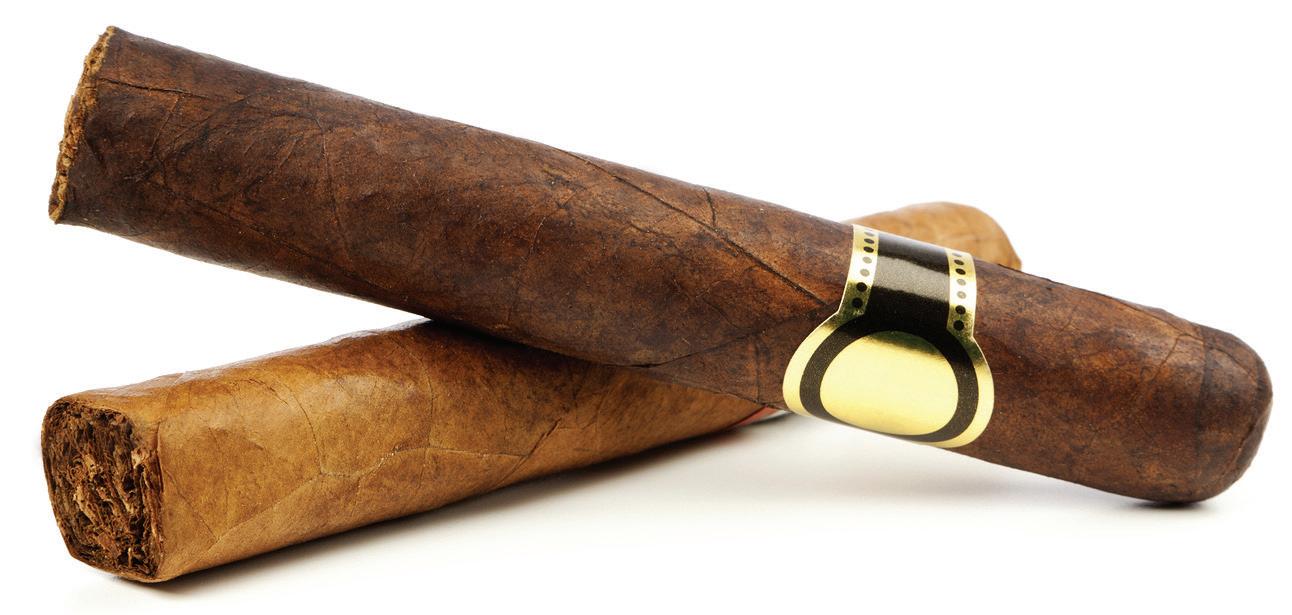
5 minute read
This is Not a Cigar
REGULATION VIEWPOINT
Premium cigars continue to get lumped together with other types of tobacco products—most recently the suddenly suspect vape category— ignoring the vast differences in product composition and use. Premium cigars must continue their difference and the need for appropriate regulation specific this product.
Advertisement
> BY JOHN GEOGHEGAN
If you’re trying to figure out the swamp of regulatory logic being applied equally to cigars and e-vapor products, you need look no further than the FDA’s mushy standards and the confusing statements coming from the White House. The White House gets a pass because they haven’t been paying attention. Russia, the middle-east, North Korea, and global trade seem to be more important. The FDA, not so much. Getting this right should not be so hard. The rules don’t need to be the same. The FDA has implied as much, but not much has been done about it.
A premium cigar is a roll of tobacco wrapped in tobacco, made predominantly by hand. The countries of origin, sizes, flavors, taste profiles, nicotine content, tars, and combustible toxins haven’t changed much in 100 years. An e-vapor device does not contain tobacco. It’s an electro-mechanical vaporizer, with a computer chip and battery activated by airflow, and a heating coil that aerosolizes an e-liquid containing mostly propylene glycol, imitation flavors, and nicotine. Since their inception, e-vapor devices have become more complex and adjustable, but the idea is the same. Ask the patent holders.
About three years ago vape manufacturers, notably Juul Labs and Imperial, discovered that by blending nicotine salts instead of distilled nicotine into their e-liquids, they could nearly double the previous ratio of nicotine to e-liquid volume in their vape devices. This would also make their vapor less harsh to inhale. We have seen the results in the form of burgeoning teen addiction. So has the FDA. Where are the limits?
Then, a little over a year ago, state-level legalization of marijuana expanded. This led to the bright idea that THC should be included in e-liquids. Extracted forms of THC found their way into e-cigarettes, vape devices, and e-liquids. Who knew this would happen? Everybody.
To improve the viscosity and volume of the THC vape oils, vitamin E acetate and other untested ingredients were added to e-liquids and put on the market with little or no regulation from the FDA. Actual product volume was north of 5 million bottles of e-liquids and pods for sale.
We have now seen the unintended and unregulated consequences in terms of lung illness and death due to blocked airways and infections. It should be added here that in European countries, where nicotine levels and ingredients in e-vapor devices are strictly regulated, none of this has occurred. Only in America.

All of this has gone on with no substantive changes to the regulation of vape products by the FDA, except to send a series of hand-wringing PR releases to congress, and to submit proposed modifications to the PMTA application format to speed things up. The FDA had the chance to regulate allowable nicotine levels. They have had the chance to regulate vape flavors for nearly five years. They had the chance to disallow Nicotine Salts. All they had to do was read the strict EPA regulations carrying stiff penalties for the unreported sale or transfer of Nicotine Salts. In their own data and explanations, Juul told the FDA that for 32 percent of young users a Juul device was the first use of nicotine. This finally made the light bulb go off.
2019 marked the 10th anniversary of the Family Smoking Prevention and Tobacco Control Act (FSPCTA) giving the FDA the deeming authority to regulate any tobacco product with a negative effect on public health among smokers and non-smokers alike. Nine years ago the FDA lost their suit to gain control over e-vapor products as medical devices. Federal District courts were having none of it. Vape products contained nicotine, looked like a cigarette, and tasted (sort of) like a cigarette, so e-cigarettes and e-liquids became tobacco products. It took the FDA six more years to achieve control, even after it was handed to them.
Thank you Judge Leon.
Premium handmade imported cigars are enjoying a renaissance in quality and visibility, due in part to partnerships between cigar makers and retailers, and the not-so-free publicity that goes with fighting for singularity. The premium cigar industry has, with great effort,successfully raised its profile in Washington.
At the same time, the twin e-vapor crises of teen nicotine addiction and THC e-liquid illness and fatalities made the news. For some reason, these two trends have been conflated by regulators and congress into one issue. Premium cigars are of little or no interest to teens, and adult premium cigar smokers don’t have much interest in vape. Two completely different users. Two very different products, one the result of agriculture and tradition, the other the result of industrial design. Both facing identical regulation and restrictions. It shouldn’t be this way.
About 22 years ago, I was part of an entourage to Washington that met with the same house subcommittee that is currently looking at an equitable approach premium cigars. We had a narrower objective then; to agree to a consent decree by the seven major cigar companies to standardize federal cigar warning labels without killing off 2 billion dollars in commerce and maybe wrecking the economies of several Caribbean countries.
The warning labels were agreed to, but with caveats. Vape wasn’t invented for another five years. The FTC handed tobacco control over to the FDA. Since then, we haven’t made much progress except for warning labels that have worked fine for 19 years. We can do better.

> These are not cigars. An open system vape box mod (left), and Juul, the market-leading cartridge-based closed system vape device (right).








